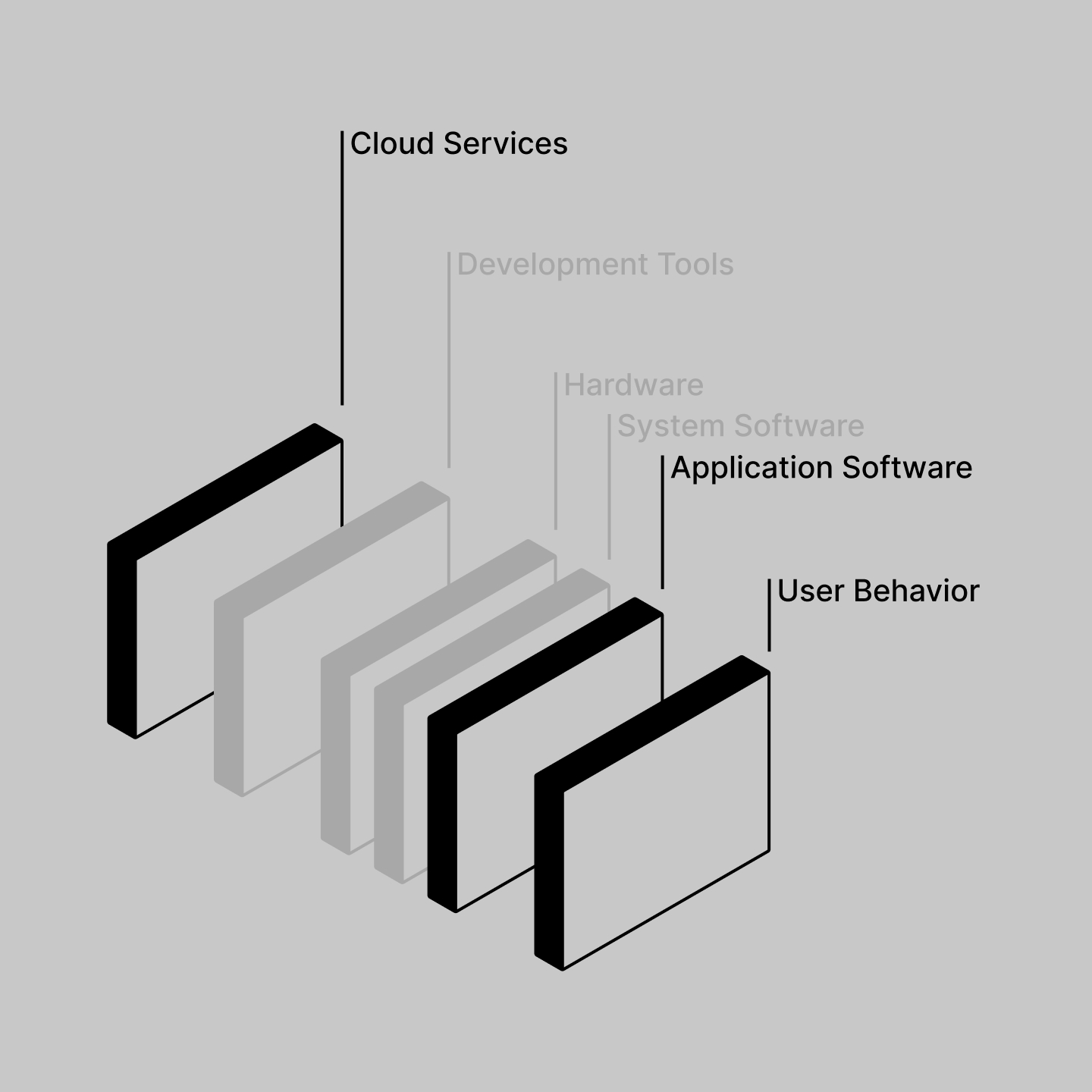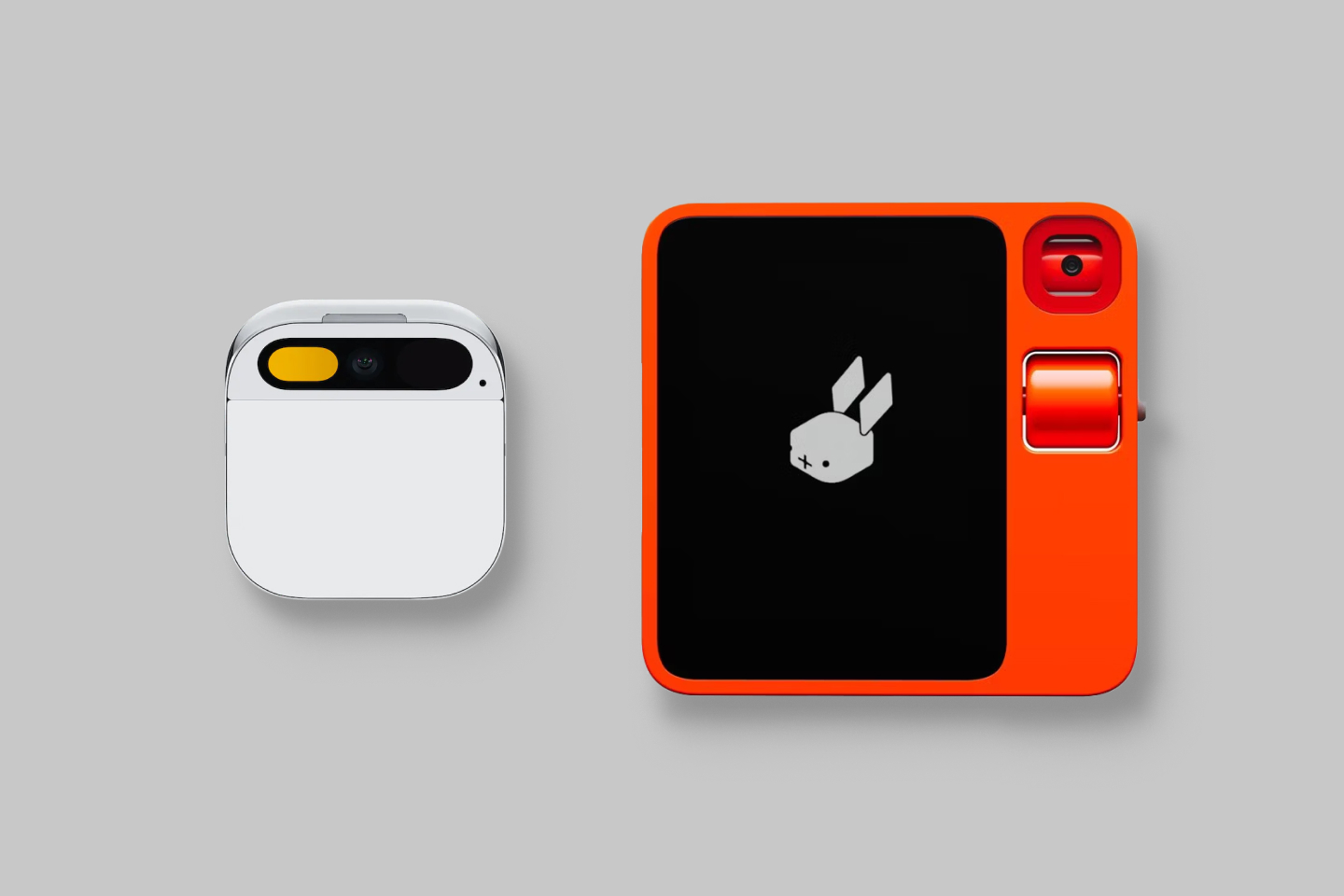
The inescapable gravity of the smartphone
8 min read May 10, 2024
The smartphone has been the most revolution technology in history. Two thirds of the world’s population has access to the internet thanks to the smartphone. Mobile technologies contributed to 5.4% of global GDP. Both numbers continue to increase year-over-year.
Like with any other technology, the benefits of the smartphones don’t come without tradeoffs. Search for “smartphone negative effects” and you’ll be met with countless articles describing issues like mental health, accidents, and bullying.
The smartphone also poses a challenge to the technology world itself. They are ubiquitous and have become deeply embedded in our lives. Both factors are making life very hard for those that hope to introduce new hardware.
What is a smartphone?
It’s easy to think of the smartphone as a standalone piece of hardware. At the launch of the original iPhone in 2007, perhaps that was true. Now, it’s better to think of the smartphone as a system of components that we can visualize it as a stack.

Cloud Services sit in the background. They provide a host of abilities to apps like syncing and collaboration.
Development Tools enable makers to craft new apps for the platform.
Hardware is itself is a dizzying system of disparate pieces like processors, memory, cameras, and screens.
System Software, like the operating system, manages system resources and provides a stable platform for application software.
Application Software answers the unique needs of each user. Most apps are made by third parties.
User Behavior is the final piece of the system. It comprises the expectations of the user and the actions they take.
The smartphone is the system comprised of these components.
How the smartphone has evolved
It is tempting to look at the modern smartphone and say that its evolution has been driven by the hardware makers. However, let’s remember that the smartphone is much larger than that.
It is a dynamic system that has evolved organically as its different parts have pulled and pushed each other.
For example, GPS was first added to smartphone Hardware in the late 00s. The obvious application was turn-by-turn navigation. GPS-based geolocation was later exposed via System Software to third party developers. Half a decade later, new Application Software like ride-sharing and food delivery arrived on the scene using GPS geolocation.
These use cases then changed User Behavior. People then began to expect seamless mobile experiences with on-demand access and real-time tracking in other Application Software.
Every piece of the smartphone system — from Hardware to User Behavior — has improved in a compounding fashion over decades. Each of these improvements has solidified the smartphone’s power.
What it takes to succeed
The most important factor determining the success of products is making something people want. In other words, a new product must fit User Behavior sufficiently to get them to buy and use it.
This is where new technologies have it hard. User expectations are sky high because of how great smartphones have become.
How technologists are innovating
It is, therefore, no surprise that the majority of successful new technology products come in the form of applications.

These companies make only Application Software or a combination of Application Software and Cloud Services. They focus on differentiation of User Behavior and avoid the extra cost of new Hardware or System Software.
Yet, there is continued appetite both from users and technology makers for new Hardware-based products. There are different approaches being taken.
Ecosystem integrations
The first are ecosystem integrations like Apple CarPlay and Android Auto. These systems mirror apps from the phone, though don’t allow control of car (like air conditioning or other settings).
By integrating with CarPlay and Android Auto, automakers are able to tap into the smartphone’s role as the primary device for in-car infotainment, entertainment, and navigation.
Unsurprisingly, CarPlay and Android Auto are a hit. Apple claims 79% of US buyers would only consider a car with CarPlay.
Apple showed off the next generation of CarPlay. That concept expanded to all screens including the gauge cluster and enabled control of essential car features. Two years later, no cars have yet shipped with this system.
 Apple’s rendering of the next-gen
CarPlay
Apple’s rendering of the next-gen
CarPlay
Building a touch-based software system in a car is very hard, even with tools like the Android Automotive operating system for cars. It’s hard because the manufacturer must not just build a car, but also every other piece of the system we laid out earlier (System Software, Cloud Services, etc.). GM’s rollout of new software is shaky to say the least. Tesla is in better shape, but they have been shipping cars with touch screens for 12 years.
A system like Apple’s next-generation CarPlay would simplify the process of building the interface. Carmakers could rely on the Application Software, System Software and Development Tools from the iOS ecosystem. Yet, at least as Apple showed it, the CarPlay interface would would look thoroughly Apple, losing any unique identity that may have come from the car brand.
There is a fundamental tension in the place of screens in cars. Users now expect screens to have polished interfaces that fluidly react to touch (setting aside whether touch screens in cars is a good idea). Style and branding contribute significantly to buying behavior. Thus, manufacturers want to offer something tailor-made and unique. They are lead to building something themselves, a task that is exceedingly difficult.
Full stack reinventions
If ecosystem integrations were difficult, full stack reinventions are even harder. The launches of the Humane AI Pin and Rabbit R1 artificial intelligence companion devices are recent examples.
 Humane AI Pin and Rabbit
R1
Humane AI Pin and Rabbit
R1
Both makers presented their devices as alternatives to the smartphone. Humane began with the vision of making people “feel superhuman”. Rabbit wanted to create “the simplest computer”.
Working back from their respective visions, both projects required building every single piece of the smartphone stack on their own. They initially drew plenty of attention for design. Humane’s product was built by former Apple talents like Imran Chaudhri and Ken Kocienda. The Rabbit R1 hardware was designed by Teenage Engineering.
They both include novel physical interfaces like Humane’s laser projector and Rabbit’s scroll wheel. Both devices use a combination of apps and cloud services to power their voice-based interfaces.
The reviews of the devices have been, to put it mildly, not great. Their problem is twofold.
First, users expect a smartphone alternative to support an endless list of features from setting timers, to having all-day battery life. Second, Humane and Rabbit reinvented every layer of the stack. But, the scope of the problem is simply too large.
On the other hand, Panic’s Playdate has been well received. It is a retro-style game console built around a Sharp memory display and a crank control.

Each layer of the stack was invented from the ground up, including the Teenage Engineering-designed Hardware, System Software, and Development Tools. Even though the user expectations of a game console are smaller than of a general-purpose computing device, the project took more than a decade to launch.
Perhaps with a few more years of software updates the AI Pin and R1 could meet user expectations the way the Playdate has, but in their current guise, both devices seem doomed to fail.
Incremental changes
The most successful approach seems to be incremental changes. Device maker Nothing approaches its products with a fashion lens, which translates to cosmetic changes to the hardware and Nothing’s own take on Android. The sum total is an experience that feels different, but still meets all basic user expectations.

Limitless is approaching the AI device game far differently than Humane or Rabbit. They are building out a wearable designed by Ammunition Group (there are already similar devices on the market like the PLAUD NOTE) that records audio to be fed into the Limitless application.

It’s an optional complement to Limitless and not the sole interface for the experience like with the other two aforementioned AI devices. Hence, the scope of the problem is far smaller.
Will there ever be a “next” computing platform?
Decades of compounded improvements on smartphone platforms have certainly made application development more viable than ever. At the same time, new hardware has a formidable opponent — the smartphone.
Hardware makers should expect users to ask, “couldn’t that just be an app?” or “couldn’t a smartphone do that?”. The depth in capability and breadth in availability of smartphones makes it extremely hard to justify any other hardware. Smartphones can do nearly anything anywhere and are only becoming more affordable.
At the launch of the iPhone in 2007, less than 20% of the world’s population had internet access and the smartphone was seen as a luxury product. Since 2019, internet users have been in the majority of the world population. Last year, smartphone owners became the majority.
Given user’s ever increasing expectations, it’s difficult not to be skeptical of our search for the next big technology platform. There is certainly room for niche hardware successes. Perhaps spatial computing will take off once it finds its killer application.
For any new platform to reach a wide scale, it will have to escape the ever growing gravitational pull of the smartphone.
Thanks to Q for reading drafts of this.